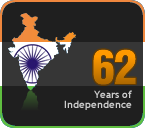Recently, the Optical Society of America opened a chapter at Caltech and organized an outreach program to give demonstrations in optics to girl scouts, roughly in classes 6-9. So one particularly warm afternoon (thanks to the greenhouse effect stemming from the fires in Southern California) we set out to an elementary school in neighbouring Alhambra. It was a rather odd configuration that we came across: four of us "teachers", four girl scout organisers and two students!
One of the demonstrations involved explaining why the sky appears blue during the day and reddish during sunset time. The organisers had a "manual" that outlined explanations of the demos. This had some rather misleading analogies, such as "energetic photons travel shorter distances, much as if you were to start running very fast, you would tire out sooner." Instead of dwelling further on these so called explanations, I thought of attempting a simpler explanation.
If one were to imagine a large, tranquil body of water such as a lake which has a little wooden post sticking out in the middle. Now think of two scenarios. In both of them, there are (plane) waves travelling in the water toward the post.
In the first case you have waves of long wavelengths (distance between consecutive peaks (or valleys) of a wave) that don't really "see" the post since each wave is much longer than the size of the post and so carry on almost unhindered past the post.
In the second case you have waves of shorter wavelengths (comparable with the size of the post) and thus get disturbed (scatter) appreciably and spread out after hitting the post. Qualitatively, this explains why shorter wavelengths scatter more than longer wavelengths.
Thus, during most of the day time, the blue components of sunlight (short wavelengths) scatter more and "spread" out, giving the sky the blue colour. Analogously, during sunset time, the blue wavelengths scatter all right, but since the sun's rays have to travel through a thicker layer of atmosphere to reach us now , these scattered blue wavelengths eventually get absorbed (loosing energy after multiple scattering events). What remains are the red wavelengths; ergo, the sky appears reddish at sunset.
The technical explanation of the same involves something known as Rayleigh scattering where the scattering cross section has a strong wavelength dependence ( wavelength^{-4} ) which implies that shorter (blue) wavelengths get scattered more than longer (red) wavelengths. This originated from the Tyndall effect . Here, if one shone light through a transparent glass of water mixed with a little milk and observed it straight-on from the opposite side, one would observe a slightly reddened colour, while if one observed the water from the side, one would see a slight blueish tinge to the light. (This effect was formalised by Lord Rayleigh soon after.) Contrary to popular belief, the scattering that causes the colours of the sky are due to the scattering of light by Oxygen and Nitrogen molecules, not dust particles, something Einstein calculated in 1911.
What I like about the waves in the water analogy is that it doesn't needlessly invoke the particle nature of light (I can't think of an explanation of this effect thinking of light as a particle) & it gives an intuitive sense of the wavelength dependence of scattering.
ps: This, I couldn't resist: Said the young man to the sunset, where are my blues ?!
Thursday, October 25, 2007
Subscribe to:
Posts (Atom)



